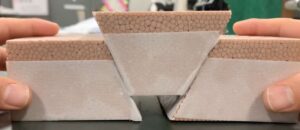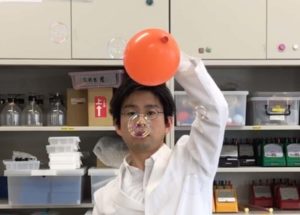The Magic Board: Build Electronics Like LEGO—No Soldering, No Fear!
I’m Ken Kuwako, your Science Trainer. Every Day is an Experiment!
“Electronics… it sounds so difficult.” “I’m worried I’ll burn myself with a soldering iron.”Do those thoughts sound familiar? Well, guess what? There’s a “Magic Board” that lets you build electronic circuits like assembling building blocks, without ever touching a hot iron or melting solder!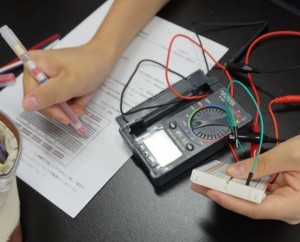 Have you heard of a “Breadboard”? The breadboard is a dream component that lets you connect electronic parts (like LEDs and resistors) just by plugging them into the holes, with no soldering required.By the way, why the funny name “Breadboard”? Legend has it that back in the early days of electronics, engineers used to prototype circuits by hammering nails into actual wooden boards used for slicing bread, and then mounting components onto those nails. It gives you a real sense of history, doesn’t it?The first time I saw one, I was thrilled! I thought, “Wow, I can wire up circuits quickly enough to do hands-on experiments with my students right in class!”I now regularly use breadboards in my lessons for building circuits and measuring things like voltage. With soldering, one mistake can mean a lot of rework, but with this, you can plug and unplug freely. Students can experiment again and again without fear of failure. That’s why I felt it was a perfect fit for science experiments.To kick off our breadboard lesson, we start with an experiment to explore the “Magic Board’s” inner workings. After all, you can’t build a circuit successfully if you don’t know how the inside is wired! It’s excellent training.
Have you heard of a “Breadboard”? The breadboard is a dream component that lets you connect electronic parts (like LEDs and resistors) just by plugging them into the holes, with no soldering required.By the way, why the funny name “Breadboard”? Legend has it that back in the early days of electronics, engineers used to prototype circuits by hammering nails into actual wooden boards used for slicing bread, and then mounting components onto those nails. It gives you a real sense of history, doesn’t it?The first time I saw one, I was thrilled! I thought, “Wow, I can wire up circuits quickly enough to do hands-on experiments with my students right in class!”I now regularly use breadboards in my lessons for building circuits and measuring things like voltage. With soldering, one mistake can mean a lot of rework, but with this, you can plug and unplug freely. Students can experiment again and again without fear of failure. That’s why I felt it was a perfect fit for science experiments.To kick off our breadboard lesson, we start with an experiment to explore the “Magic Board’s” inner workings. After all, you can’t build a circuit successfully if you don’t know how the inside is wired! It’s excellent training.
The Science Recipe: Map the “Secret Connections” of the Magic Board
[What You Need]
- A Breadboard
- Jumper Wires (short wires for breadboards)
- A Digital Multimeter (or continuity checker)
[Instructions]Use the digital multimeter to test continuity (whether electricity flows) between various holes on the breadboard. If you set your meter to “Resistance ($\Omega$)” mode, a connection (meaning the holes are linked internally) will show a value close to zero. (If your meter has a “Continuity Mode,” it will let out a handy “beep” sound!)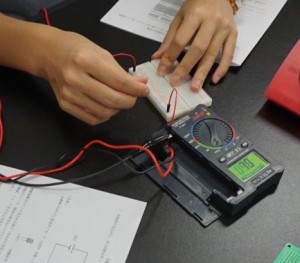 On a paper diagram of the breadboard, use a red pen to draw lines connecting the holes that show continuity (that are connected).
On a paper diagram of the breadboard, use a red pen to draw lines connecting the holes that show continuity (that are connected).
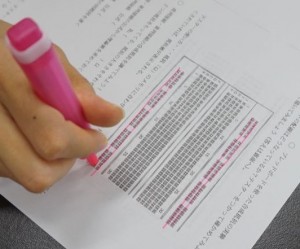 What kind of “Secret Map” did you uncover? You should find that the lines on the edges (called the power rails) are connected vertically along the entire length, while the central component area is connected in short segments of five holes horizontally. This unique structure is the secret to efficient component wiring!It’s a simple activity, but many students are touching a meter and a breadboard for the first time, and they all get completely absorbed in the trial-and-error process. The quiz-like nature—”Is this connected?” “How about the neighbor?”—makes it fun. I encourage you to try this at home!
What kind of “Secret Map” did you uncover? You should find that the lines on the edges (called the power rails) are connected vertically along the entire length, while the central component area is connected in short segments of five holes horizontally. This unique structure is the secret to efficient component wiring!It’s a simple activity, but many students are touching a meter and a breadboard for the first time, and they all get completely absorbed in the trial-and-error process. The quiz-like nature—”Is this connected?” “How about the neighbor?”—makes it fun. I encourage you to try this at home!
Unlimited Failure is Why Science is Fun
The truly wonderful thing about the breadboard is that it’s reusable.With soldering, a circuit board is generally a one-time use, and removing components is a struggle. But with a breadboard, you can just pull out the parts and start a new circuit from scratch. This means you have unlimited chances to fail and try again!This isn’t just economical; it’s a huge educational advantage. It removes the fear of making a mistake and encourages trial and error, which is the most essential process in science.Right now, I’m using the breadboard to train my students. I think it would be great fun if they eventually become the teachers and host “Electric Circuit Experience Workshops” for elementary school kids!
Inquiries and Requests
Bring the wonder and fun of science closer to you! We’ve compiled easy-to-understand fun science experiments you can do at home and tips for them. Feel free to browse around!The content of this Science Idea Book has been published. Find out more here.About the administrator, Ken Kuwako: hereFor various requests (writing, lectures, experiment classes, TV supervision/appearances, etc.): here– Article updates are posted on X!
![]() We post experiment videos on the Science Idea Channel!
We post experiment videos on the Science Idea Channel!

